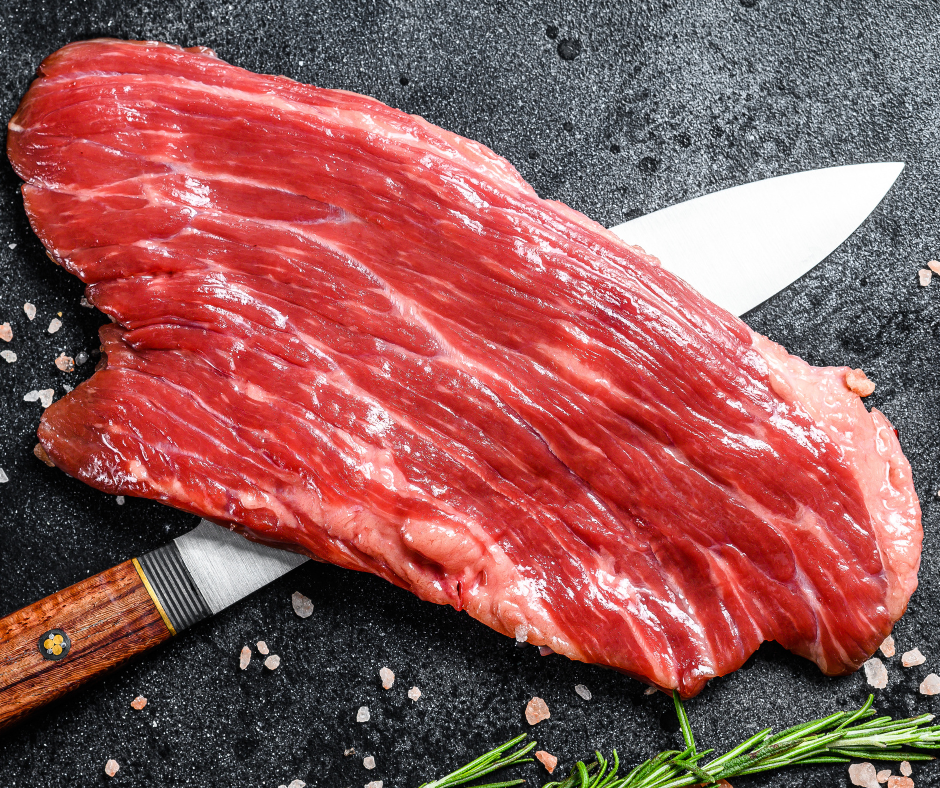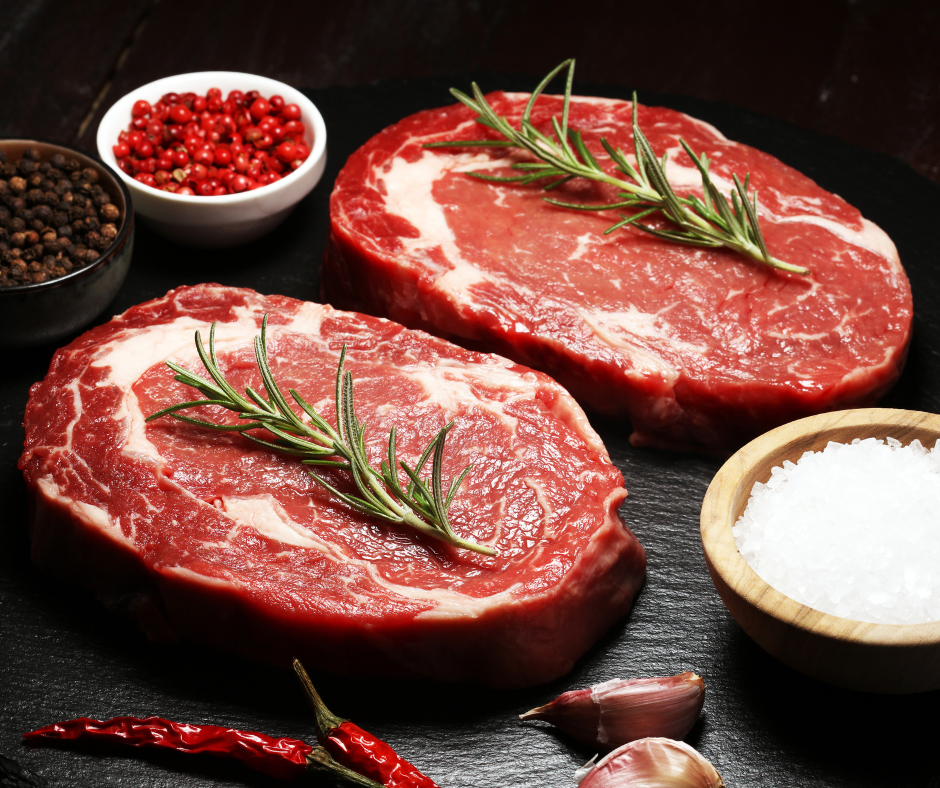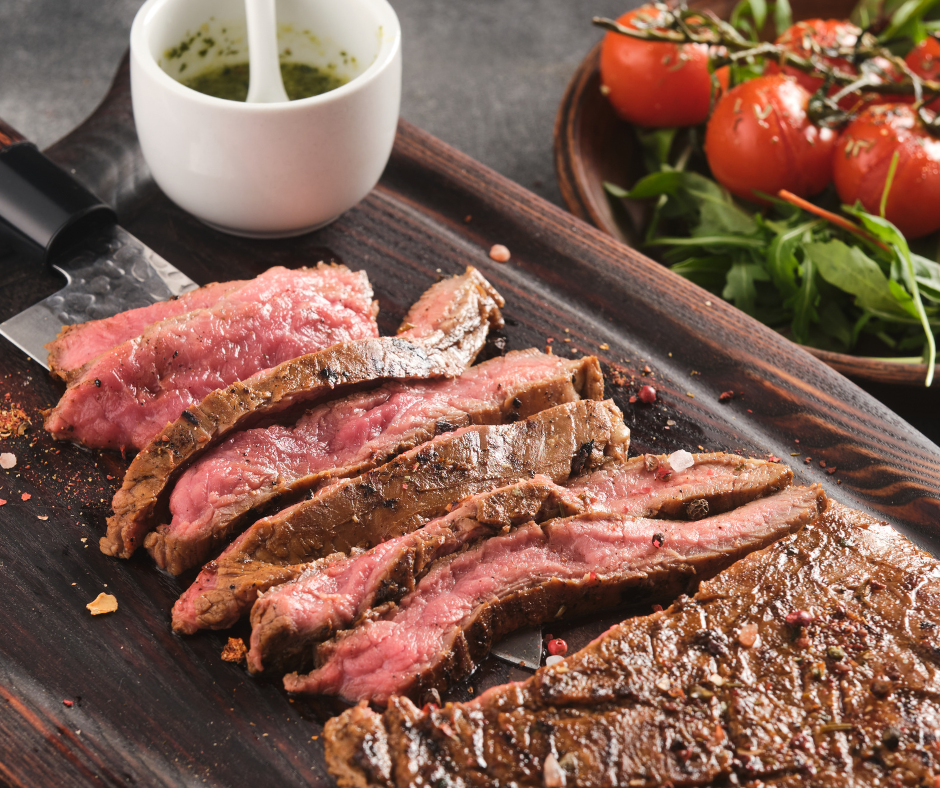Introduction
While raw beef may not be a common choice for many people, exploring the safety and culinary considerations surrounding this practice is worth exploring. But Can You Eat Raw Steak? Due to health concerns, eating raw steak is not a popular tradition in the United States and the United Kingdom. However, raw beef dishes are celebrated as delicacies in other parts of the world, such as Europe, Southeast Asia, and Africa. Understanding the reasons behind these cultural differences can shed light on the safety measures and culinary techniques of consuming raw steak.
Why Eating Raw Steak Is Not Popular In The US Or The UK
In the US and the UK, raw meat consumption is generally considered risky due to potential health hazards. Health authorities recommend cooking beef thoroughly to eliminate harmful bacteria that can cause severe illnesses, including Salmonella, E. coli, Shigella, and Staphylococcus. These bacteria can lead to food poisoning, resulting in symptoms such as nausea, vomiting, diarrhea, and abdominal pain.
The risk of bacterial contamination is present in raw meat, and cooking it at sufficiently high temperatures helps to destroy harmful pathogens. As a result, most restaurants and food establishments follow strict guidelines to ensure the safety of their customers by cooking beef to the recommended internal temperature.
Raw Beef Dishes As Delicacies In Europe, Southeast Asia, And Africa
In contrast to the US and the UK, many cultures worldwide embrace the consumption of raw beef and consider it a culinary delicacy. In Europe, regions like Italy and France have their versions of raw beef dishes. The Italian dish carpaccio features thinly sliced raw beef served with various accompaniments, while the French dish tartare combines finely chopped raw beef with seasonings and toppings.
In Southeast Asia, countries like Japan have a long-standing tradition of consuming raw beef in dishes like beef sashimi or beef tataki. These dishes emphasize the freshness and quality of the meat, which is carefully sourced and handled to minimize the risk of bacterial contamination.
Africa also boasts unique raw beef delicacies, such as Kitfo in Ethiopia and Nyama Choma in Kenya. Kitfo combines ground raw beef with spices, while nyama choma consists of grilled pieces of raw beef. These dishes are prepared using specific cuts of meat and undergo meticulous handling processes to ensure safety.
It is important to note that raw beef is consumed under specific conditions in these cultures. Quality restaurants and culinary experts adhere to strict quality standards, including sourcing meat from trusted suppliers, employing proper handling and storage practices, and conducting thorough inspections to minimize the risk of bacterial contamination.
In conclusion, while the consumption of raw steak may not be popular in the US or the UK due to safety concerns, it is celebrated as a delicacy in many other parts of the world. These cultures have developed culinary traditions and safety protocols that enable them to enjoy raw beef dishes without compromising their well-being. However, it is essential for individuals considering consuming raw beef to exercise caution, as there is always a risk of bacterial contamination. Consulting with experts and opting for high-quality ingredients are crucial steps in enjoying raw beef dishes safely.

Can You Eat Raw Steak?
Health Risks Associated With Uncooked Beef
Consuming raw beef comes with a heightened risk of harmful bacteria, which can lead to foodborne illnesses. Some pathogens potentially contaminating raw beef include Salmonella, Escherichia coli (E. coli), Shigella, and Staphylococcus. These bacteria can cause severe symptoms, such as nausea, vomiting, diarrhea, and abdominal pain. In some cases, they can invade the bloodstream and nervous system, leading to life-threatening complications.
While some cultures around the world have perfected the art of consuming raw beef dishes without getting sick, it is crucial to note that they have highly-trained professional chefs who know how to handle the meat properly to prevent contamination. However, even with proper handling, bacterial contamination is always risky.
Salmonella, E. Coli, Shigella, And Staphylococcus As Potential Contaminants
Raw beef can harbor illness-causing bacteria; some strains, like Salmonella, E. coli, Shigella, and Staphylococcus, are particularly dangerous. These bacteria can be present in raw meat and cause food poisoning if consumed without proper cooking. Symptoms of these bacterial infections can range from mild gastrointestinal discomfort to severe illness.
Salmonella can lead to salmonellosis, a common bacterial infection characterized by symptoms such as fever, diarrhea, and abdominal cramps. E. coli, especially the strain called E. coli O157:H7, can cause bloody diarrhea, kidney failure, and even death in severe cases. Shigella infection, or shigellosis, can result in watery or bloody diarrhea, fever, and stomach cramps. Staphylococcus aureus, commonly found on the skin and in nasal passages, can cause symptoms such as diarrhea, vomiting, nausea, and stomach cramps.
Cooking Process And Temperature To Kill Bacteria
Cooking raw meat, including beef, is essential to eliminate harmful bacteria and ensure food safety. Raw meat and poultry should always be cooked to a safe minimum internal temperature. An oven or a meat thermometer can help you achieve the desired level of doneness.
For beef, it is recommended to cook it to a minimum internal temperature of 145°F (63°C) for medium-rare and 160°F (71°C) for medium. For ground beef, which has a higher risk of bacterial contamination, it is advised to cook it to a minimum internal temperature of 160°F (71°C) to ensure all bacteria are killed.
Cooking beef at these temperatures helps destroy harmful pathogens, reducing the risk of foodborne illnesses. It is crucial to maintain good food hygiene practices, such as proper handling, storage, and cooking, to ensure the safety of the meat.
In conclusion, to answer the question, ‘Can you eat raw steak?’ raw beef has inherent risks due to potential bacterial contamination. While some cultures celebrate raw beef dishes as delicacies and have perfected the art of handling and preparing meat safely, it is important to approach raw beef consumption with caution. Cooking beef to the recommended minimum internal temperatures is essential to kill bacteria and reduce the risk of foodborne illnesses. By following proper food safety guidelines and consulting with experts, individuals can enjoy beef in its various forms while minimizing health risks.

Culinary Considerations And Safety Measures
Deliciousness Of Raw Beef When Prepared Correctly
In the culinary world, raw beef can be a delicious and indulgent experience for those who appreciate its unique flavors and textures. Steak tartare, for instance, is a classic dish made with finely chopped or ground raw beef, typically seasoned with capers, onions, and Worcestershire sauce. When prepared correctly by professional chefs in reputable establishments, the flavors of the raw beef can be savory, rich, and incredibly satisfying.
However, it is important to note that enjoying raw beef requires caution due to the potential risks associated with consuming raw meat. While it is possible to savor the deliciousness of raw beef, it is crucial to prioritize safety and take necessary precautions to reduce the risk of foodborne illnesses.
Infections From Raw Steak: Listeriosis, Salmonellosis, And E. Coli Poisoning
Like any other raw meat, raw beef can harbor harmful bacteria that can cause infections if not handled and cooked properly. Some common pathogens in raw steak include Listeria monocytogenes, Salmonella, and Escherichia coli (E. Coli). These bacteria can cause serious illnesses such as listeriosis, salmonellosis, and E. Coli poisoning.
Listeriosis is a bacterial infection caused by consuming foods contaminated with Listeria monocytogenes. It can lead to symptoms such as fever, muscle aches, and gastrointestinal issues, which can be particularly dangerous for individuals with weakened or compromised immune systems.
Salmonellosis is another type of bacterial infection caused by Salmonella bacteria. Symptoms can range from diarrhea, abdominal cramps, and fever to more severe cases requiring medical attention. E. Coli poisoning, specifically from strains like E. Coli O157:H7, can result in severe gastrointestinal symptoms, including bloody diarrhea and, in some cases, kidney failure and even death.
To minimize the risk of these infections, it is crucial to handle raw beef properly and ensure thorough cooking to destroy any potential bacteria that may be present.
Importance Of Sourcing High-quality Beef And Proper Handling
The safety of consuming raw beef greatly depends on the quality of the meat and how it is handled throughout the entire process, from sourcing to preparation. Quality restaurants that serve raw beef follow strict standards and procedures to ensure the beef is safe for consumption. This includes sourcing high-quality beef from reputable suppliers who adhere to proper safety and hygiene practices.
Additionally, handling raw beef is essential to maintain its safety. Chefs and kitchen staff in these establishments receive thorough training on food safety protocols to minimize the risk of bacterial contamination. This includes storing the beef at the correct temperature, using separate cutting boards and utensils for raw meat, and practicing proper hand hygiene.
It is worth noting that attempting to prepare raw beef dishes at home using store-bought ground beef is highly discouraged. Ground beef purchased from grocery stores may not meet the same safety standards as those in professional kitchens. The risk of bacterial contamination is much higher when handling and preparing raw beef without proper knowledge and precautions.
In conclusion, while raw beef dishes can offer a unique and delicious culinary experience, it is important to approach them with caution. Consumption of raw steak comes with inherent risks, including the potential for bacterial contamination and the associated foodborne illnesses. For those considering eating raw beef, seeking out reputable establishments with professional chefs who follow strict safety standards is advisable.
Additionally, sourcing high-quality beef and practicing proper handling and cooking techniques are vital to minimize the risk of harmful bacterial infections. By prioritizing safety and taking necessary precautions, individuals can enjoy the flavors and textures of raw beef while minimizing potential health risks.

Conclusion
Now you should know the answer to ‘Can You Eat Raw Steak?’. When consuming raw beef, it is important to prioritize safety and take necessary precautions to minimize the risk of foodborne illnesses. While raw beef can be enjoyed in certain culinary preparations, such as steak tartare, it is crucial to understand the potential dangers associated with consuming raw meat. Infections from Listeria monocytogenes, Salmonella, and Escherichia coli (E. Coli) can lead to serious illnesses such as listeriosis, salmonellosis, and E. Coli poisoning.
Importance Of Cooking Beef To A Minimum Internal Temperature Of 160°F
To ensure the safety of beef consumption, it is important to cook it to a minimum internal temperature of 160°F (71.1°C). Cooking ground beef to this temperature helps destroy harmful bacteria and reduce the risk of foodborne illnesses. A food thermometer is also recommended to measure the meat’s internal temperature accurately.
Safety Precautions For Those Who Insist On Eating Raw Meat
For individuals who insist on consuming raw beef, it is essential to take proper safety precautions. Here are some guidelines to follow:
- Choose reputable sources: When consuming raw beef, it is crucial to source it from reputable establishments that follow strict safety standards. These establishments typically use high-quality beef from known sources and have professional chefs trained in handling and preparing raw meat.
- Proper food handling: If you choose to prepare raw beef at home, it is important to practice proper food handling. This includes using separate cutting boards and utensils for raw meat, storing the beef at the correct temperature, and practicing good hygiene, such as thorough hand washing.
- Quality beef selection: When purchasing beef for raw consumption, it is important to choose high-quality cuts. Look for fresh, properly packaged beef from reputable suppliers that adhere to safety and hygiene practices.
- Risk assessment: It is crucial to assess your risk tolerance and consider any health conditions or weakened immune systems that may increase your susceptibility to foodborne illnesses. Individuals who are pregnant, elderly, or have compromised immune systems should be particularly cautious when consuming raw beef.
Note: Please Remember That Consuming Raw Or Undercooked Meat Poses Health Risks, And It Is Always Recommended To Cook Meat Thoroughly To Ensure Safety.
While there may be certain culinary experiences that involve the consumption of raw beef, it is important to keep in mind that raw or undercooked meat can harbor illness-causing bacteria. Cooking meat thoroughly is the best way to eliminate these risks and ensure food safety. It is always recommended to follow cooking guidelines and cook meat to the appropriate internal temperature to ensure it is safe for consumption.
In conclusion, while raw beef can be enjoyed in specific culinary preparations, it is important to approach it cautiously. Consuming raw beef carries inherent risks, and it is crucial to prioritize safety and take necessary precautions to minimize the risk of foodborne illnesses. By following proper cooking guidelines, sourcing high-quality beef, and practicing safe food handling, individuals can enjoy the flavors and textures of raw beef while minimizing potential health risks.
FAQ: Can You Eat Raw Steak? Safety and Culinary Considerations
Q: Can You Eat Raw Steak?
A: Eating raw steak carries a risk of foodborne illnesses, so it is generally not considered safe.
Q: What are the risks of eating raw steak?
A: Consuming raw steak can expose you to dangerous bacteria such as Listeria, Salmonella, and E. coli, which can cause infections or food poisoning.
Q: How can I reduce the risk of getting sick from raw steak?
A: While safety is not guaranteed, you can take precautions to lower the risk. Choose a whole piece of steak or meat ground in-house, as pre-packaged minced meat may contain meat from multiple cows, increasing the chances of contamination. Additionally, opt for reputable restaurants that follow strict quality and safety standards in handling and storing raw beef.
Q: Can you eat raw steak without getting sick?
A: While some individuals may occasionally consume raw steak without experiencing illness, it is still important to exercise caution due to the elevated risk of harmful bacteria.
Q: What should I consider when deciding to eat raw steak?
A: Considering the potential health risks of consuming raw steak is crucial. If you choose to eat it, ensure it is sourced from a reliable and trustworthy supplier, handled properly, and stored at appropriate temperatures.
Q: Are there any safe alternatives to eating raw steak?
A: Cooking steak thoroughly to at least medium-rare or well-done temperatures can significantly reduce the risk of foodborne illnesses, making it a safer alternative to raw steak.
Q: What are the potential health consequences of eating raw steak?
A: Eating raw steak can lead to severe illnesses like listeriosis, salmonellosis, and E. coli poisoning. Symptoms may include abdominal pain, diarrhea, vomiting, and fever, and in severe cases, it can result in hospitalization or even be life-threatening.
Q: Is eating raw steak safer than raw chicken or pork?
A: While raw steak is considered safer than raw chicken or pork, it is important to note that it is not entirely safe. Each type of raw meat carries its risks of bacterial contamination, so caution should be exercised when consuming any raw meat.
Graham Bartlett, owner at Taco and Piña Mexican food, is all about bringing the authentic flavors of Mexico to your plate. With Graham Bartlett, you can tantalize your taste buds with mouthwatering tacos and delicious piña coladas, all in one place. Stay connected and never miss a beat as Graham Bartlett takes you on a culinary journey through vibrant Mexican cuisine. Join the community and discover the perfect blend of flavor, culture, and passion that Graham Bartlett brings to the table. Experience the essence of Mexico, one bite at a time, with Graham Bartlett.
